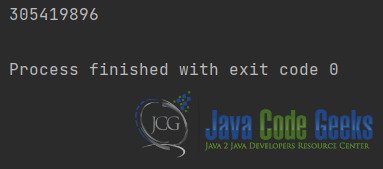How Java Read Integers – Little Endian or Big Endian?
Before diving into the topic of how Java read integers, it’s important to understand the concepts of endianness, Little Endian or Big Endian, and how it affects the representation of data in computer memory. Endianness refers to the byte order in which multi-byte data types are stored. There are two commonly used byte orders: big endian and little endian.
1. Introduction
Java is a high-level, platform-independent programming language widely used for developing various applications. Understanding how Java handles integers in terms of endianness is crucial for ensuring data consistency and portability across different systems. This article explores the byte order used by Java when reading integers and provides code examples to illustrate the concepts.
In Java, the byte order is fixed and follows the big endian format. This means that when Java reads or writes multi-byte data types, such as integers, it uses the big endian byte order. In other words, Java assumes that the data it reads is in big endian format, regardless of the underlying system’s endianness.
2. The Big Endian Byte Order
In big endian, the most significant byte (MSB) is stored at the lowest memory address, while the least significant byte (LSB) is stored at the highest memory address. On the other hand, in little endian, the LSB is stored at the lowest memory address, and the MSB is stored at the highest memory address.
As mentioned earlier, Java uses the big endian byte order when reading and writing multi-byte data types. Let’s examine this behavior with a code example:
import java.nio.ByteBuffer;
public class BigEndianExample {
public static void main(String[] args) {
int value = 0x12345678;
byte[] bytes = ByteBuffer.allocate(4).putInt(value).array();
for (byte b : bytes) {
System.out.format("%02X ", b);
}
}
}
In this example, we create an integer value of 0x12345678, which is a 32-bit hexadecimal representation. We then use a ByteBuffer to convert this integer into a byte array. Finally, we iterate over the byte array and print each byte in hexadecimal format.
When executing this code, the output will be:
The output reveals that Java stores the integer value in the big endian format, with the most significant byte (MSB) at the lowest memory address.
3. Read Integers in Java
When reading integers in Java, the byte order is always assumed to be big endian. Java provides various input streams for reading data, such as FileInputStream, BufferedInputStream, and DataInputStream. These streams internally handle the byte order conversion if necessary.
Let’s consider an example where we read an integer from a file using the DataInputStream class:
import java.io.DataInputStream;
import java.io.FileInputStream;
import java.io.IOException;
public class ReadIntegerExample {
public static void main(String[] args) {
try (DataInputStream dis = new DataInputStream(new FileInputStream("data.bin"))) {
int value = dis.readInt();
System.out.println(value);
} catch (IOException e) {
e.printStackTrace();
}
}
}
In this example, we create a DataInputStream object, which wraps a FileInputStream object to read data from a file named “data.bin.” We then call the readInt() method to read an integer from the input stream. Java internally handles the byte order conversion based on the assumption of big endian byte order.
4. Handling Endianness with ByteBuffer
Although Java assumes big endian byte order when reading integers, there might be cases where you need to handle endianness explicitly, such as when working with data from external sources or specific protocols. Java provides the ByteBuffer class, which allows you to control the byte order when reading or writing multi-byte data types.
Let’s see an example of how to read an integer in little endian byte order using ByteBuffer:
import java.nio.ByteBuffer;
import java.nio.ByteOrder;
public class LittleEndianExample {
public static void main(String[] args) {
byte[] bytes = {0x78, 0x56, 0x34, 0x12};
ByteBuffer buffer = ByteBuffer.wrap(bytes).order(ByteOrder.LITTLE_ENDIAN);
int value = buffer.getInt();
System.out.println(value);
}
}
In this example, we manually create a byte array with the little endian representation of the integer value 0x12345678. We then create a ByteBuffer, wrap the byte array, and set the byte order to little endian using the order() method. Finally, we retrieve the integer value using the getInt() method.
When executing this code, the output will be:
The output demonstrates that by specifying the little endian byte order explicitly, we can correctly interpret the byte array and obtain the expected integer value.
5. Conclusion
In conclusion, Java uses the big endian byte order when reading and writing multi-byte data types like integers. This byte order assumption provides consistency and portability across different systems. However, when handling data from external sources or specific protocols that use little endian byte order, you can use the ByteBuffer class to explicitly control the byte order. Understanding these concepts is vital for developing robust and interoperable Java applications.
6. Download the Source Code
This was an example of How Java Read Integers.In Little Endian or Big Endian?
You can download the full source code of this example here: How Java Read Integers – Little Endian or Big Endian?




